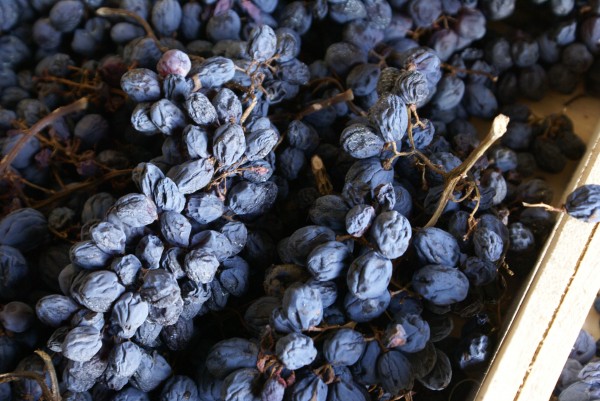Anteprima Amarone
Posted on 4 February 2014
I am just back from Verona, the city of love and wine. My trip focused on the latter. More specifically, the annual presentation of the new vintage of Amarone. Amarone is (at least on paper) one of Italy’s greatest wines. And it is also one of the world’s oddest: it is made from raisins. Some other wines as such Málaga, Greek Muscats, or French (and Swiss) vin de paille are also made from raisined grapes, but Amarone is dry(ish). The result is an incredibly luscious, concentrated über-fruity wine that cruises north (sometime far north) of 15% alcohol.
Amarone, when well made, can be a great wine. I’ve certainly enjoyed many superlative example during the Anteprima and especially, the four extra days I spent visiting the region’s best wineries. Great Amarone has huge alcohol but is not alcohol-driven, has recorded levels of extract without being extracted, and can be one of the fruitiest red wines – but it is no “fruit bomb”. And the best of the best achieve the impossible: they are supremely drinkable, despite their heaviness. A bottle of Bertani 2004 was emptied by a table of four quicker than a Pinot Grigio.
There is another side to the Amarone coin, though. There are many dire wines: heavy, cumbersome, overextracted, overoaked, burdened with residual sugar to the point of tasting semi-sweet. Then there is, in the middle, a sea of acceptable but fairly ordinary and forgettable Amarone. Given it costs between 20 and 50€ per bottle, you expect more, and many wines fall short. Amarone has a number of issues, one of which is (as in other places in Italy, such as Brunello di Montalcino) a period of uncontrolled growth: the production is now 5 times higher than in 1993 and 50% higher than in 2000. Amarone used to be a special treat, produced from a small selection of the very best grapes a grower could obtain from a best vineyard location. Now for some vintners, Amarone represents more than 50% of the production: it’s become the ordinary norm rather than the thrilling exception. Yet it sells (90% is exported), particularly to northern markets where the extra density and alcohol are appreciated (perhaps as a surrogate for stronger alcoholic drinks) so the trend continues, with all its related issues: a large number of underperforming producers, vines grown in the wrong places, coops and large bottlers flooding the market with millions of bottles of cheap Amarone.
You’ll read all about this, and more, in my Amarone Special Report on Tim Atkin MW’s www.timatkin.com in a few weeks. I’ll explore some of my favourite wines and memories over the next few posts here on the blog. Enjoy!
Disclosure: my stay in Verona including flights and accommodation was paid for by the Consorzio Tutela Vini Valpolicella.



